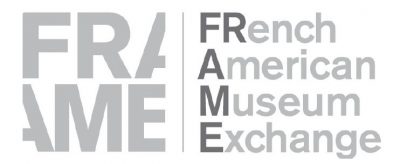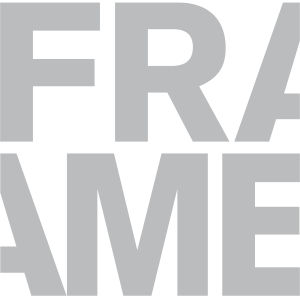Musée des Beaux-Arts de Rennes
The exhibition was originally scheduled to be on view from February 12 to May 3, 2021. Due to the lockdown and the pandemic, a video of the show will be available soon.
The painter and engraver Stanley William Hayter (1901-1988) was born in England. He moved to Paris where he created a studio of engraving known as “Atelier 17” (Studio 17). Pablo Picasso, Joan Miró, Yves Tanguy, André Masson, and Alberto Giacometti, then many artists from different generations explored engraving as a new field of creation in their studio. For more than 60 years, Atelier 17 turned out to be a unique, transatlantic, and cosmopolitan creative lab. It welcomed generations of artists, including many women such as Maria Helena Vieira da Silva, Louise Bourgeois, Nina Negri, and Helen Phillips, while Surrealist automatic writing and new forms of abstraction were in contact in the studio.
Around Hayter’s work, prints, paintings, and sculptures offer an immersion in the creative processes implemented by the artists of Atelier 17, from the cutting of the plate to the inking and printing experiments. The works of nearly 70 artists from the Modernist avant-garde are presented in the exhibition, while the new forms of European and American abstraction are taking shape. Hayter, through his creativity and teaching, was able to renew the practice of engraving which he disseminated across the world, in the middle of the 20th century.
First Section – Paris, 1927-1939
From the opening of his Parisian engraving studio in 1927, Hayter oriented his teaching towards intaglio. His Urban Landscapes, from 1930, cross architectural perspectives and dreamlike figures, close to the automatism promoted by the Surrealists. His students came from diverse backgrounds. Hayter’s studio was open and well-known artists came to experiment engraving at Atelier 17, close to the Surrealist universe.
Artists presented in the exhibition for the 1930s:
John Buckland Wright – Alberto Giacometti – Stanley William Hayter – Joseph Hecht – Dalla Husband – Vassily Kandinsky – Roderick Mead – Joan Miró – Nina Negri – Gabor Peterdi – Pablo Picasso – Anton Prinner – Dolf Rieser – Arpad Szenes – Yves Tanguy – Luis Vargas Rosas – Roger Vieillard – Maria Helena Vieira da Silva
Second Section – New York, 1940-1950
The Parisian Atelier 17 closed its doors in 1939. Hayter relocated its studio to the New School for Social Research in New York, becoming the landmark of European Surrealists in exile. From 1943, the engravings were mostly abstract, as well as Hayter’s works. In contact with the Surrealists, the young generation of American artists discovered in engraving an inexhaustible field of creation. In 1946, Hayter introduced a simultaneous color printing process. The success of this technique is contemporary with Abstract Expressionism, which brings, in a non-figurative aesthetic, an immediate emotional intensity. For Jackson Pollock – who owes to Hayter the notion of dripping to some extent – as well as for Robert Motherwell, engraving is essential to their expression. Color is introduced spontaneously into the abstract compositions of these young abstract artists. In addition, more and more women artists were working at Atelier 17.
Artists presented in the exhibition for the 1940s:
Ellen Abbey Countey – Margaret Balzer Cantieni – Frederick Becker – Alicia Bell Legg – Louise Bourgeois – Letterio Calapai – Marc Chagall – Minna Citron – Edward Countey – Dorothy Dehner – Sari Dienes – Christine Engler – Francine Felsenthal – Sue Fuller – Milton Gendel – Peter Grippe – Terry Haass – Anita Heiman – Ian Hugo – Margaret Kettunen Zegart – Mauricio Lasansky – Jacques Lipchitz – André Masson – Joan Miró – Robert Motherwell – Louise Nevelson – Gabor Peterdi – Helen Phillips – Jackson Pollock – André Racz – Abraham Rattner – Karl Schrag – Doris Seidler – Kurt Seligmann – Alice Trumbull Mason – Roger Vieillard – Enrique Zañartu
Third Section – Paris, 1950-1964
In 1950, Hayter asked Enrique Zañartu to find a Parisian location for Atelier 17. We can notice two characteristics for the prints produced at Atelier 17 in this decade: the superposition of colors is worked in multiple shades. The engraving plates bear the mark of the open bite thanks to which chance and virtuosity come together when the engravings are printed. The reference to nature appears and the work of color is omnipresent.
Artists presented in the exhibition for the 1950s to 1964:
Pierre Alechinsky – Isolde Baumgart – Françoise Bricaut – Jean Clerté – Corneille – Anthony Gross – Terry Haass – Jacques Hérold – Sigismond Kolos-Vary – Richard Lacroix – Wifredo Lam – André Masson – Yoshiko Noma – Helen Phillips – Roger Platiel – Bernard Rancillac – Krishna Reddy – Nono Reinhold – Jean-Claude Reynal – Dolf Rieser – Hector Saunier – Karl Schrag – Gail Singer – Yves Tanguy – Eugenio Téllez – Enrique Zañartu.
This exhibition was made possible thanks to the collaboration of the Bibliothèque nationale de France and with the support of FRAME. It is part of an American Season in France, in partnership with the Musée d’arts de Nantes, the Musée Fabre in Montpellier and the Centre de la Vieille Charité in Marseille, all members of the FRAME network.


